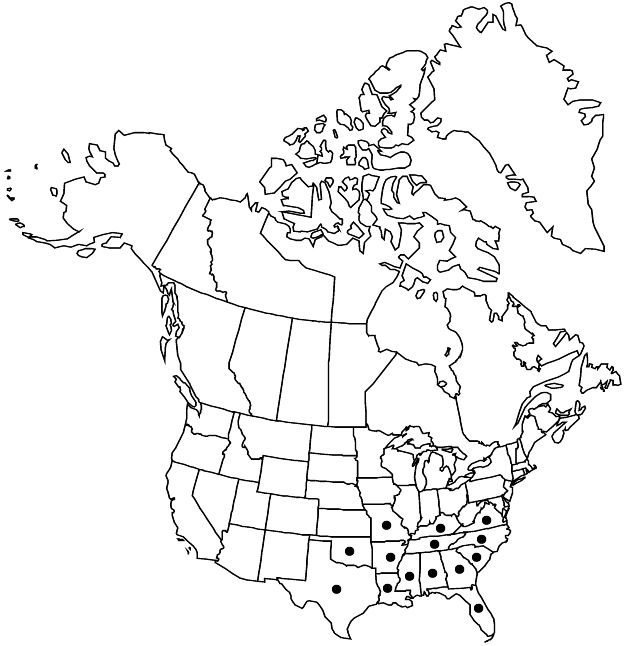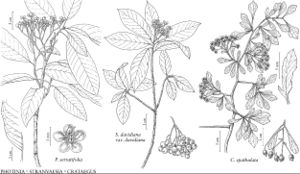Difference between revisions of "Crataegus spathulata"
FNA>Volume Importer |
FNA>Volume Importer |
(No difference)
| |
Revision as of 23:14, 16 December 2019
Shrubs or trees, 30–70 dm, branching often tabulate when open grown. Stems: 3-year old twigs deep purple-brown, older dark gray; 3-year old thorns on twigs blackish, ± straight, 3–4(–5) cm. Leaves: petiole short; blade usually dark green, sometimes ± glaucous, narrowly or broadly spatulate, 1.5–3 cm, base cuneate, lobes 0 or 1 per side, lobe apex acute to rounded, margins subentire, crenate, or serrate, veins 3 per side (extending to sinuses and lobes), apex subacute to acute, surfaces usually glabrous, marginal and scattered abaxial hairs, adaxial midvein with long hairs (± dense young). Inflorescences 20–30-flowered; branches glabrous; largely ebracteolate, sometimes a few curved, green stipular bractlets; bracteole margins eglandular or with very few, very small glands. Flowers strong-smelling, 10 mm diam.; hypanthium glabrous; stamens 20, anthers pale yellow; styles 3–5. 2n = 34, 51.
Phenology: Flowering Apr; fruiting Sep–Nov.
Habitat: Brush, calcareous substrates
Elevation: 10–500 m
Distribution

Ala., Ark., Fla., Ga., Ky., La., Miss., Mo., N.C., Okla., S.C., Tenn., Tex., Va.
Discussion
Crataegus spathulata is locally common across the southern states from southern Missouri to Virginia south to eastern Texas to Florida.
Mature Crataegus spathulata has very attractive, often honey-colored, exfoliating bark. The illustration herein depicts an atypically large, unusually shaped, herbaceous bracteole.
Selected References
None.
